The Region
The region belongs to the western part of the Bohemian Massif where three principal tectonic units—the Saxothuringian, the Moldanubian, and the Tepla-Barrandean Unit touch. It is intersected by an ENE-WSW striking neotectonic structure, the Eger Graben, which dominates from the viewpoint of geodynamics. The Marianske Lazne fault striking NNW–SSE is probably terminated in the conjunction with the Eger Graben. Historical macroseismic reports confirm the general swarm-like character of seismicity in the region since 1552.
Earthquakes Swarms
Earthquake swarms represent an intensive, long lasting, low magnitude seismicity that contrasts with more typical mainshock-aftershock sequences. Such seismicity can be felt by the population, sometimes with damages of buildings. They are nowadays recognized in many regions worldwide under different tectonic settings, mainly in volcanic and geothermal fields or at margins of tectonic plates. They can also represent intraplate activity as is the case of the West Bohemian region. However, their mechanism is still not fully disclosed. They can occur as precursors of larger earthquakes as, e.g., during recent L’Aquila 2009 earthquake in Italy.
In West Bohemia, at present, the highest concentration of earthquake activity occurs in the area of the Cheb Basin, near three Quaternary volcanoes and at the intersection of major tectonic lines. It seems that the earthquake swarms are related to the re-activation of a complex system of faults. The most intensive earthquake swarms were in the years 1896/1897, 1903, 1908/1909, 1985/1986, 2000, 2008, 2011, and 2014, but a weaker activity is recognizable almost continuously.
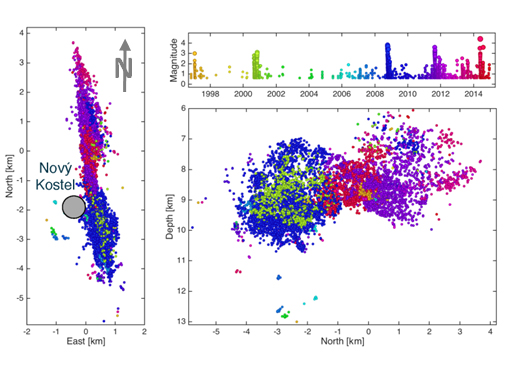
Seismic activity in the Nový Kostel swarm area, which dominated the activity during 1997 – 2014. Left: map of earthquake epicentres
demonstrating that the foci of events align along steeply dipping fault. Right bottom: earthquake hypocentres along vertical cross-section
parallel to the fault. Right top: occurrence of the earthquakes with time, vertical axis shows Richter magnitude of individual events.
Seismic activity is colour coded according to time of occurrence.
Fluids and Earthquakes
CO2 degassing is concentrated in the Cheb Basin and surrounding areas in the form of dry mofettes and mineral springs. High portions of mantle derived helium and CO2 indicate magmatic origin and fluid transport from the Earth’s mantle. On their way to the surface the fluids penetrate through faults and most probably involved in the earthquake activity.
Monitoring of the ascending CO2 and groundwater level shows that the rate and isotopic composition varies with time and is related to the stress accumulated in rocks. This is influenced by changes in tectonic stress field and fluid pore pressure reactivating system of faults and dislocation on them.
Recent monitoring of CO2 shows multivalent results because fluids and seismic activity show different trends for different periods. The most peculiar anomaly was found in 2014 when steady massive increase of dry CO2 flow was detected in Hartoušov mofette, which coincided with the beginning of the seismic activity in the Nový Kostel area.
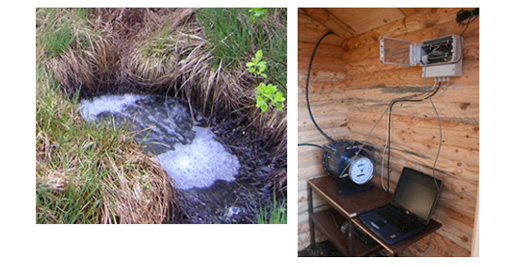
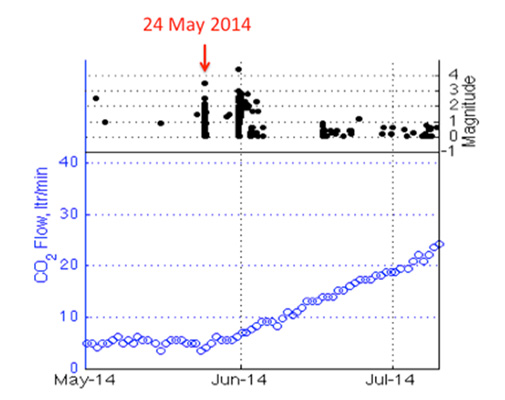
Flow of dry CO2 in the Hartoušov borehole and earthquakes prior and during the 2014 seismic activity in Nový Kostel focal zone.
Fluids and Deep Biosphere
Carbon dioxide degassing in the Cheb Basin in form of dry mofettes is the most prominent in the national natural reserve Soos, Bublák near village Vackovec, or Hartoušov. These places can also be investigated for CO2 interactions with deep biosphere. The long-term degassing of mineral-rich waters and gases in granitic and sedimentary layers makes this area ideally suited to study the effect of CO2 on the deep biosphere and the development of life at depth.
Recent microbiological studies have shown the existence of diverse and active microbial ecosystems in the deep subsurface. It was shown that the deep biosphere is the largest potential ecosystem on Earth and two thirds of all microbial biomass is located in the deep subsurface. Furthermore, the deep subsurface is harboring a huge carbon reservoir which is equivalent to that of all plants on Earth.
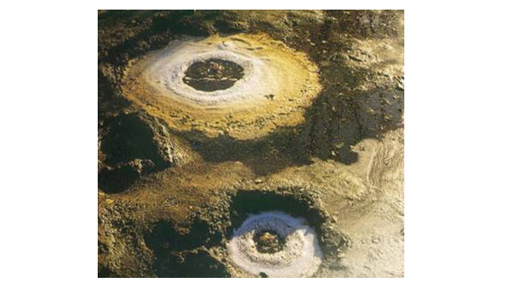
The relation of deep biosphere to seismic activity was documented during the year 2000 earthquake swarm when about two months after the beginning of the activity a drastical increase of CH4 concentration was observed in the gas phase of the Wettinquelle. The analysis shows that additional methane has to be of microbial origin.
The results of pilot microbiology study indicate that active fault systems of the Eger Rift area can be classified as a 'Hot Spot' for microbial subsurface life. Ancient DNA might also bear information on past microbial communities ane can help to understand the paleo environmental conditions.
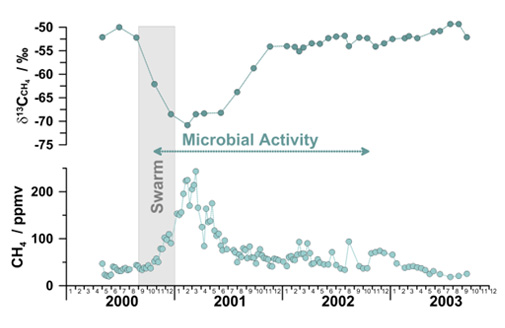
Temporal variation of methane (CH4) concentration in the Wettinquelle gas, which is inversely correlated with the δ13C values of CH4, in relation to the seismically active period in 2000.
Web administrator R. Beranek (2020)